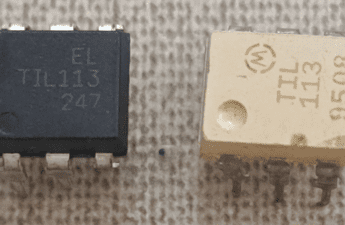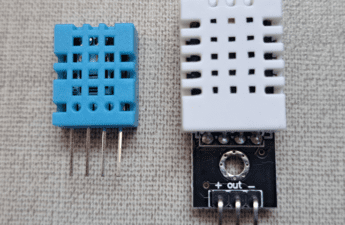I will explain how the 555 IC (Integrated circuit) works and what you can do with it. This is one of the most useful components you can use in your personal projects.
How it works?
Here is the chip’s diagram:

The resistors have 5kΩ each that why it is called 555, it also has two comparators and a SR flip-flop as main components. In the figure below, there is the circuit’s interior. The 555 operate in three basic modes: astable, monostable and bistable.

555 Pins
- Pin 1: Ground.
- Pin 2: Trigger, used to set the flip-flop’s output to “HIGH” when apply a voltage equal or less than one third of supply’s voltage or a negative pulse.
- Pin 3: The chip’s output connected at the flip-flop’s Q.
- Pin 4: Reset, used to reset the flip-flop, the chip stops working if grounded.
- Pin 5: Voltage control, connected with an inverting input of a comparator with a 2/3 supply voltage. Used to change the signal’s width of the output.
- Pin 6: Threshold is connected to the non-inverting input in the comparator. If the voltage is equal or greater than 2/3 of voltage supply, then Q (pin 3) will be “LOW”.
- Pin 7: Discharge, it is used to discharge an external capacitor.
- Pin 8: Power supply.
555 main circuits
- Monostable:

When the trigger pin (pin 2) is high, the discharge pin (pin 7) drain the current to the ground and the C can’t be charged. When the trigger pin (pin 2) is set to “LOW”, the discharging transistor stop the flow to the ground, the C is charged, while the voltage is below 2/3 supply voltage, the threshold pin (pin 6) is “LOW” and the output is “HIGH”. When the voltage in the capacitor reach 2/3 supply voltage, the threshold pin (pin 6) switch the output. The output width depends of the capacitor and the resistor connected on pins 8, 6 e 7 and have the formula below:
T=1.1\times R\times C
T = time in seconds;
R = resistance in ;
C = capacitance in farads.
- Astable:

In this mode, the output emits an oscillating signal in square waveform. The trigger pin (pin 2) is connected with the threshold pin (Pin 6). When the pins 2 and 6 are “LOW”, the output is “HIGH”, the current will flow through R1 and R2 because the discharge pin (pin 7) is “LOW”, so the capacitor will be charged. When the voltage in the capacitor reaches 2/3 of supply voltage, the pins 6 and 2 is “HIGH”, the output is “LOW” and the pin 7 is “HIGH”, therefore the capacitor is discharged. After reaches 1/3 of supply voltage, the pin 2 turns off the discharging transistor, the output is “HIGH” and the cicle continues. The oscillation’s frequency depends on the capacitor and the resistors, there is the formula:
f=\frac{1.44}{\left [ \left ( R1+2\cdot R2 \right ) \times C \right ]}
An astable 555 can have duty cycles between 50% and 100%, duty cycle determinates how much time the output will stay “HIGH” and how much it will stay “LOW”, this is the equation to calculate the time the output is in state “HIGH”:
t_{h}=0.693 \cdot C ( R1 + R2 )
Time the output is in state “LOW”:
t_{l}=0.693 \cdot R2 \cdot C
- Bistable:

In the bistable mode, the 555 circuit have two inputs, when the Switch1 (reset) is closed the output stay in “LOW” and when the Switch2 (trigger) is closed the output stay in “HIGH”. If both switches are closed, the output is “LOW”.
Applications
Too many projects can be done with 555, here is some examples:
- Resistive sensors (replace one resistor in astable mode for a LDR or a NTC/PTC);
- Modulators to communications systems;
- VCO;
- Control servomotors;
- Metronomers;
- Timers;
- Alarms;
- Etc.



